EXACT TIME & PRICE TARGETING CAN BE ACHIEVED
Here Is How……
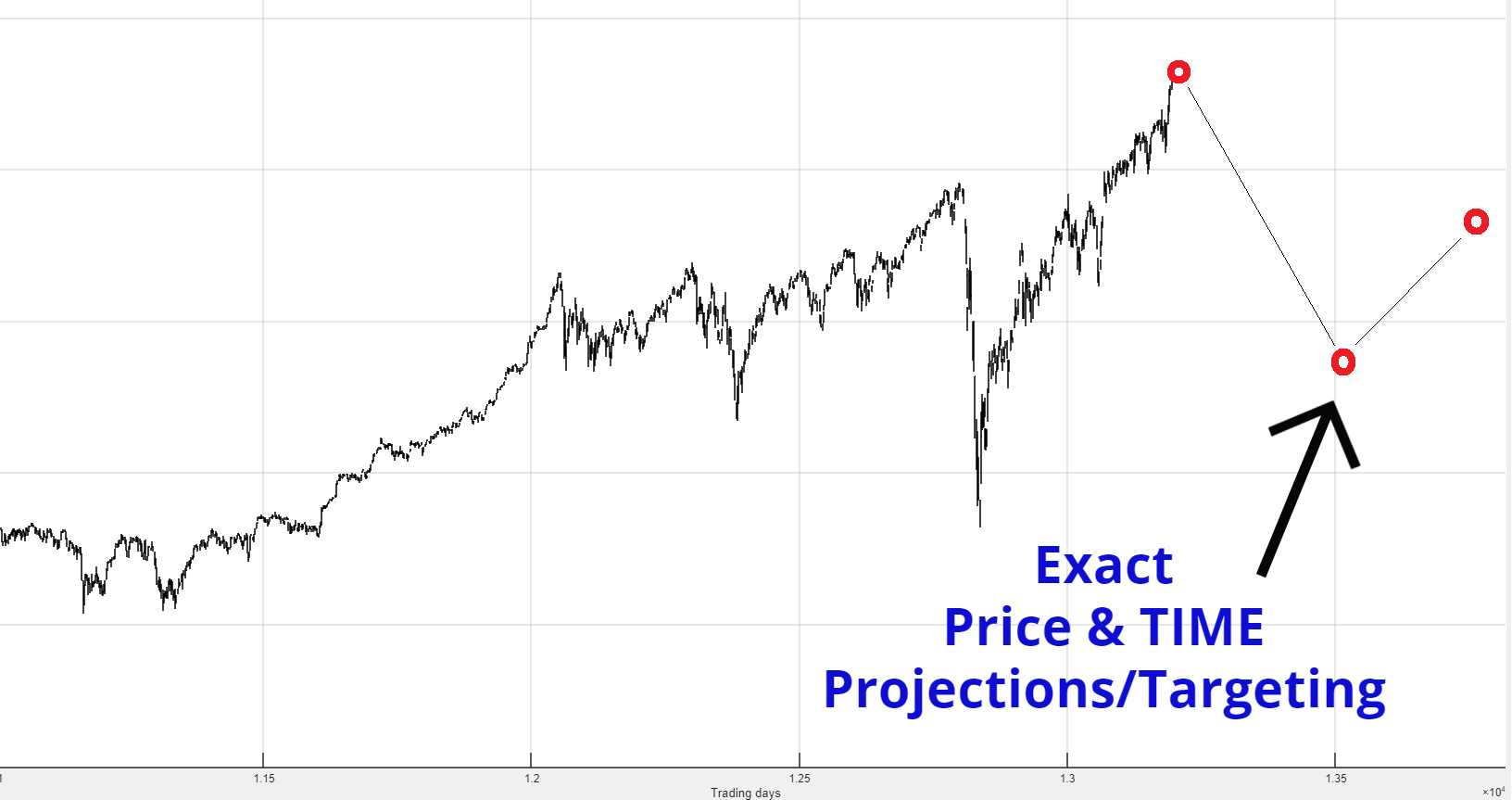
Please Learn About Our Mathematical Work Below
Just Some Of Our Recent Market Calls
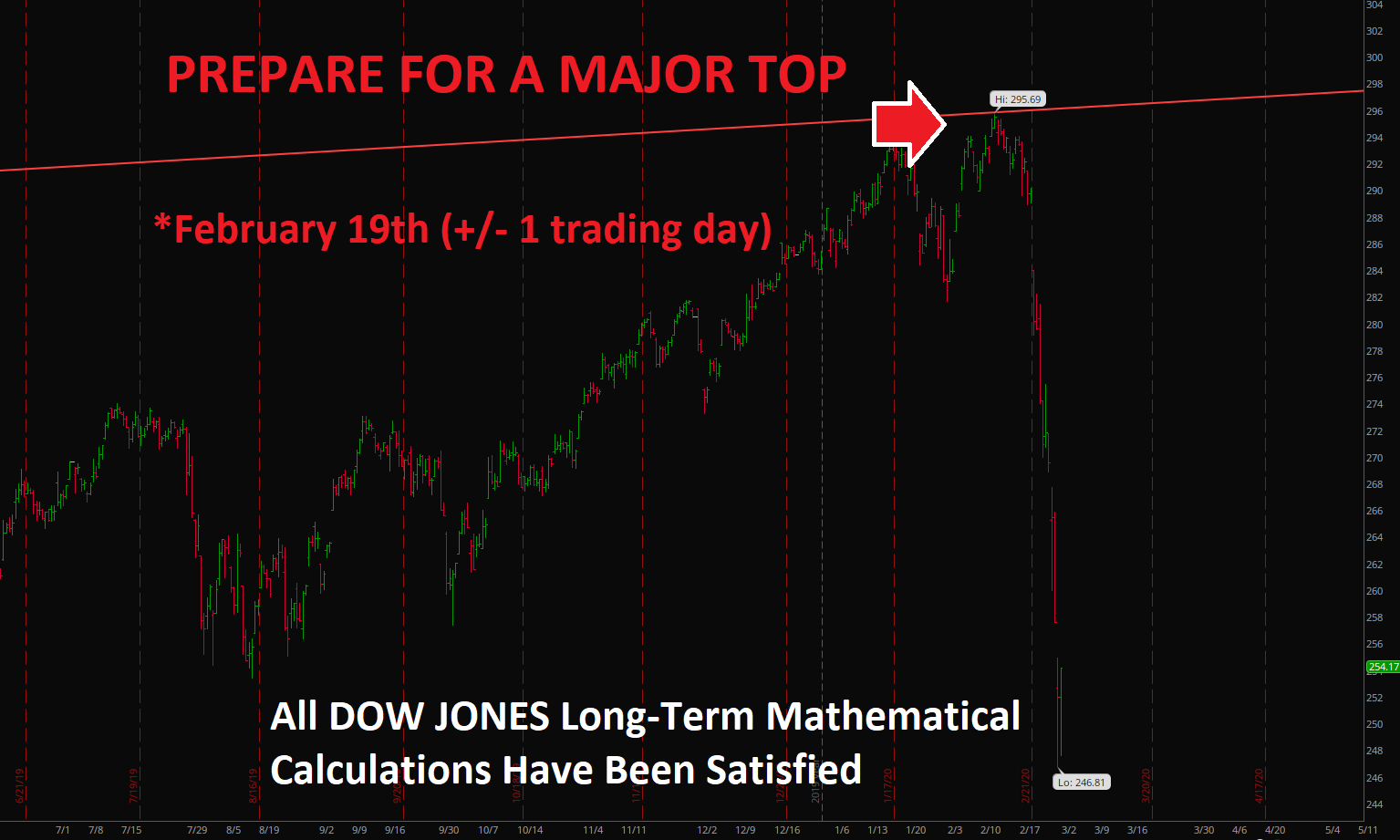
To See More Market Calls Please Click Here
I believe our mathematical and timing work is nearly identical to what Jim Simons has done at Renaissance Technologies. In terms of a mathematical trade secret that has allowed them to be the best performing hedge fund over so many decades. I am assuming you know who Jim Simons is, if not, please Click Here to read the article below in full.
Why Do You Think Your Work Is The Same???
During his 2014 TED Talk Jim Simons discussed what appeared to be two abstract mathematical concepts (video below – starts at 5 minute mark). My jaw nearly dropped. These were the same mathematical concepts we were applying to the stock market at the time and getting extremely accurate results.
To an untrained eye it was nothing, to us, Jim Simons was finally (he is very secretive) discussing the secret mathematical concepts behind Renaissance’s incredible success in money management. Allow me to explain this in greater detail…….
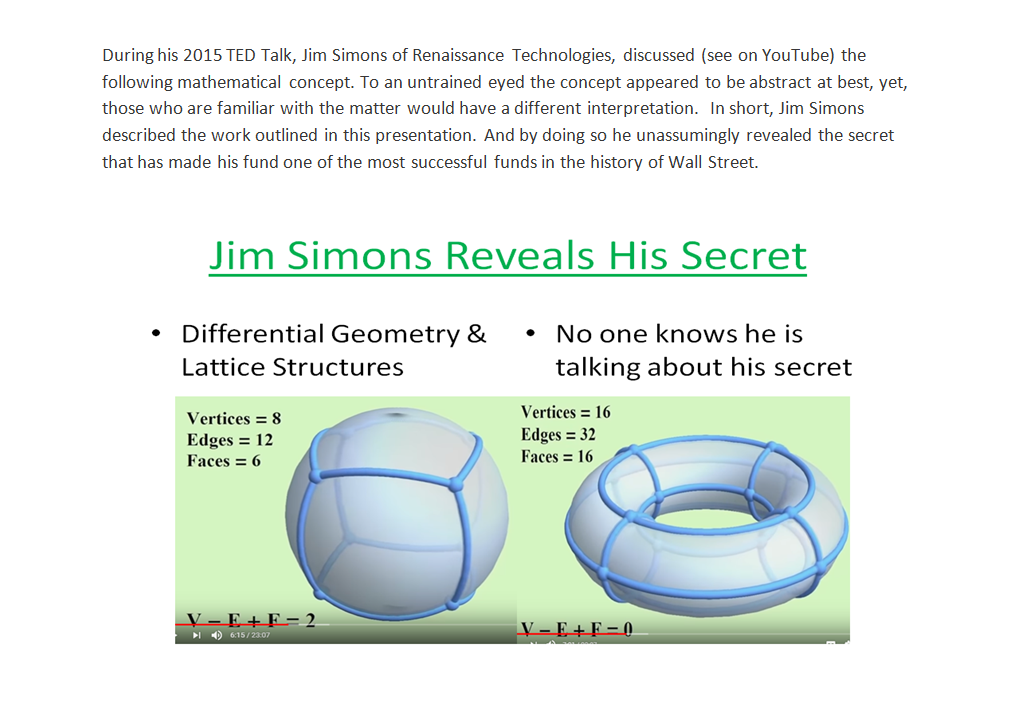
Here’s What Jim Simons Means……
“The markets being, at minimum, a 3-Dimensional phenomena, exactly like a large molecule rotating in space, in and out of the Z plane, with DNA coding sequences governing the entire process. Without understanding that the market is 3-D, twisting like a plant governed by the phyllotactic laws of dual number series and harmonic composition and decomposition, all measurements taken on a 2-D chart become misleading.”
What Does That Mean?
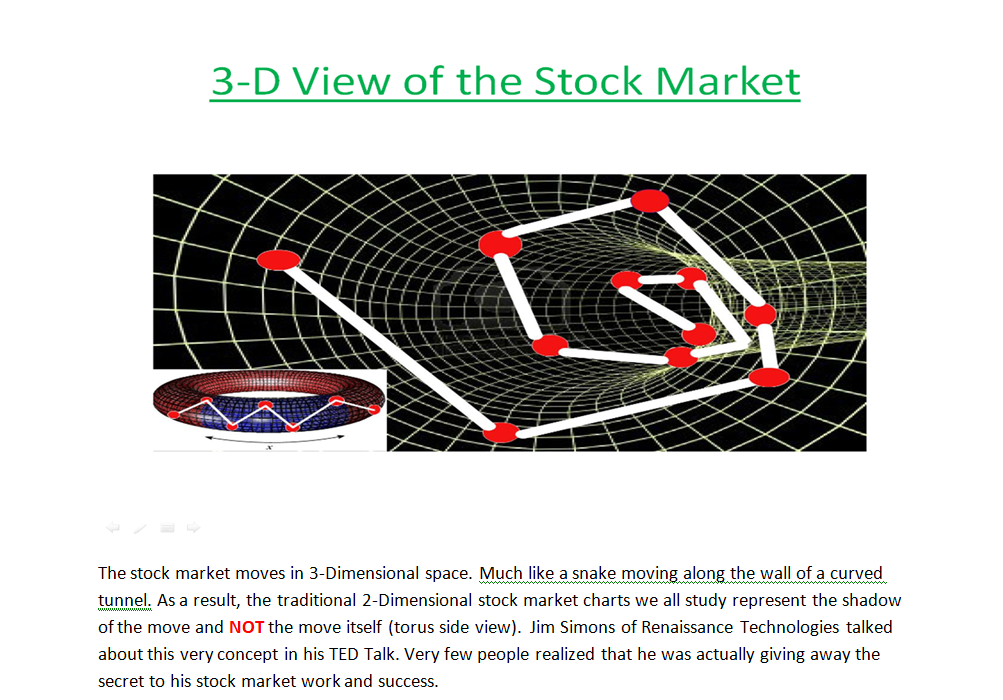
The stock market moves in 3-Dimensional space. Much like a snake moving along the wall of a curved tunnel. As a result, the traditional 2-Dimensional stock market charts we all study represent the shadow of the move and NOT the move itself (torus side view).
So, how do we measure the stock market in 3-Dimensions? With very simple high school geometry.
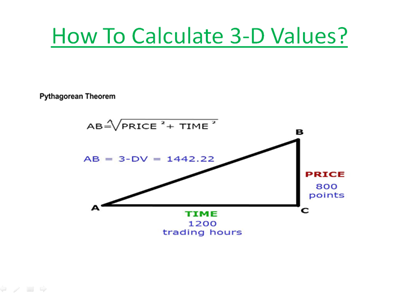
LET ME SHOW YOU JUST HOW ACCURATE THIS WORK IS
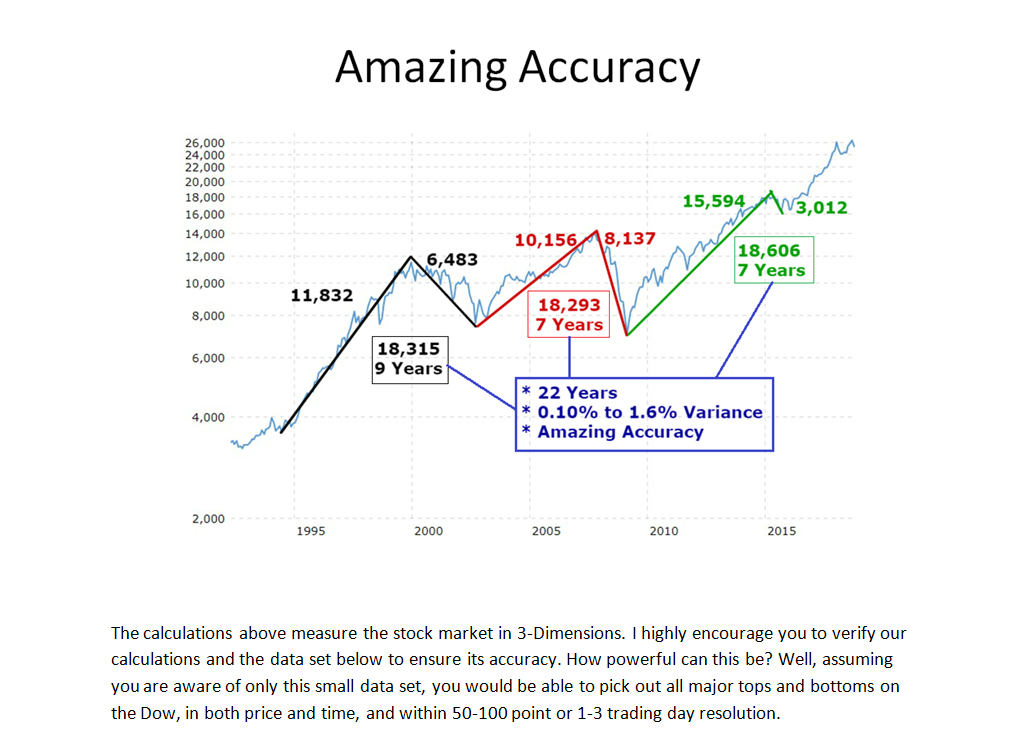
The calculations above measure the stock market in 3-Dimensions. I highly encourage you to verify our calculations and the data set below to ensure its accuracy. How powerful can this be? Well, assuming you are aware of only this small data set, you would be able to pick out all major tops and bottoms on the Dow, in both price and time, and within 50-100 point or 1-3 trading day resolution.
| Move | High Date | High Price | Low Date | Low Price | Change Hours | Change In Price | 3D Value |
| 1994/2000 | 1/14/2000 | 11,895 | 11/23/1994 | 3,612 | 8,437 | 8,296 | 11,832 |
| 2000/2002 | 1/14/2000 | 11,895 | 10/10/2002 | 7,156 | 4,437 | 4,727 | 6,483 |
| 2002/2007 | 10/11/07 | 14,279 | 03/12/2003 | 7,357 | 7,470 | 6,882 | 10,156 |
| 2007/2009 | 10/11/07 | 14,279 | 3/6/2009 | 6,428 | 2,280 | 7,811 | 8,137 |
| 2009/2015 | 5/19/2015 | 18,351 | 3/6/2009 | 6,428 | 10,050 | 11,923 | 15,594 |
| 2015/2016 | 5/19/2015 | 18,351 | 8/24/2015 | 15,332 | 436 | 2,981 | 3,012 |
ALLOW ME TO GIVE YOU ANOTHER EXAMPLE
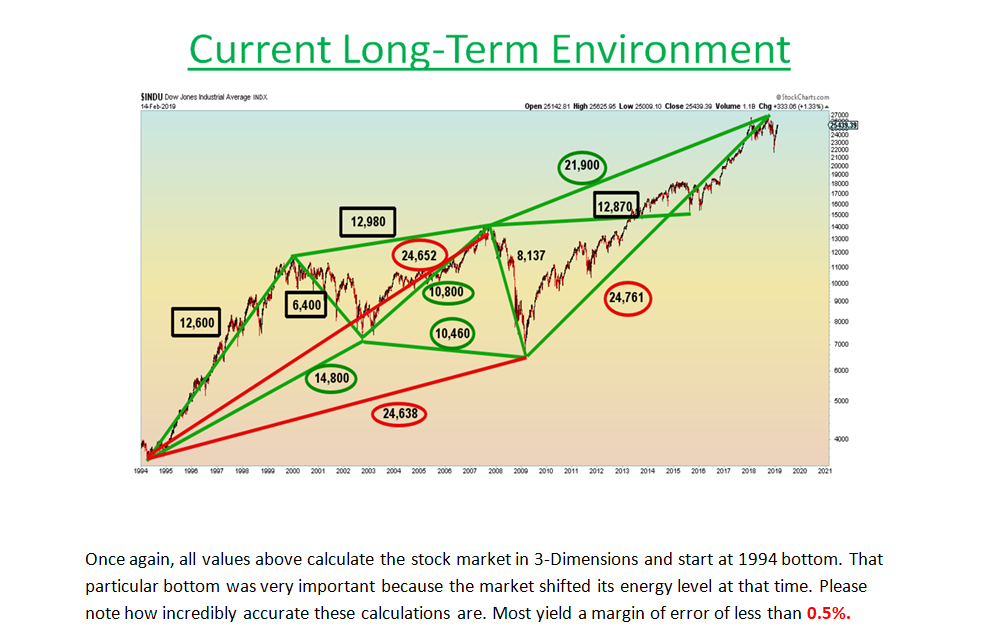
Once again, all values above calculate the stock market in 3-Dimensions and start at 1994 bottom. That particular bottom was very important because the market shifted its energy level at that time. Please note how incredibly accurate these calculations are. Most yield a margin of error of less than 0.5%.
- The value of approximately 24,650 (red circles) show up on at least three incredibly important tops/bottoms. Representing such moves as 1994 bottom to 2007 top and 2009 bottom and 2009 bottom to a secondary top in October of 2018.
- The value of approximately 12,700 (black squares) show up on at least three occasions as well. Marking incredibly important tops and bottoms such as 2000 and 2007 tops and 2015 bottom. Note, 6,400 is half of this value (2000 top to 2002 bottom move)
- All green circle values are related to the primary value of approximately 10,800 (2002 bottom to 2007 top move). At 2X, 1X and Square Root of 2 (14,800) relationships.
Please note something else of significant importance. The data set above represents a tiny portion of the analysis available to us once we begin to calculate the market in 3-Dimensions. For instance, if we zoom in to Intraday charts, we will continue to see similar structures and relationships. Finally, this sort of an analysis applies to all financial instruments (stocks, bonds, commodities, etc..) and time frames.
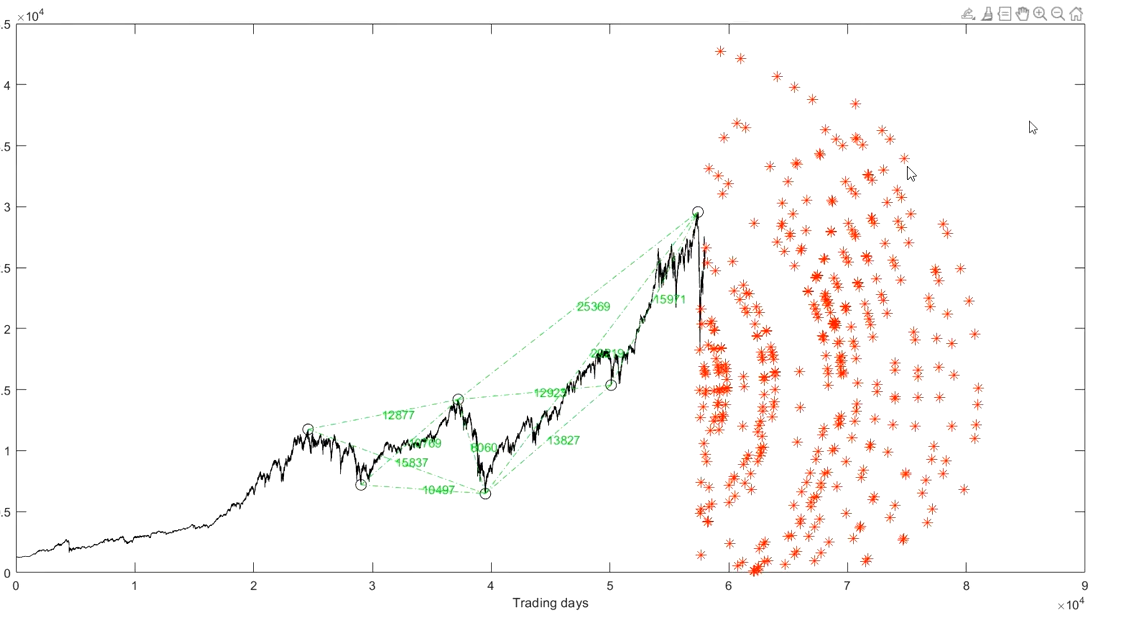
TIMING
PROPRIOTARY TIME CYCLES
Our computer system analyzes past proprietary cycles to identify important upcoming TIME turning points. It then clusters these cycles into a singular high probability TIME turning point. In other words, when multiple powerful cycles come together, a market turn, on most time frames, is highly probable.

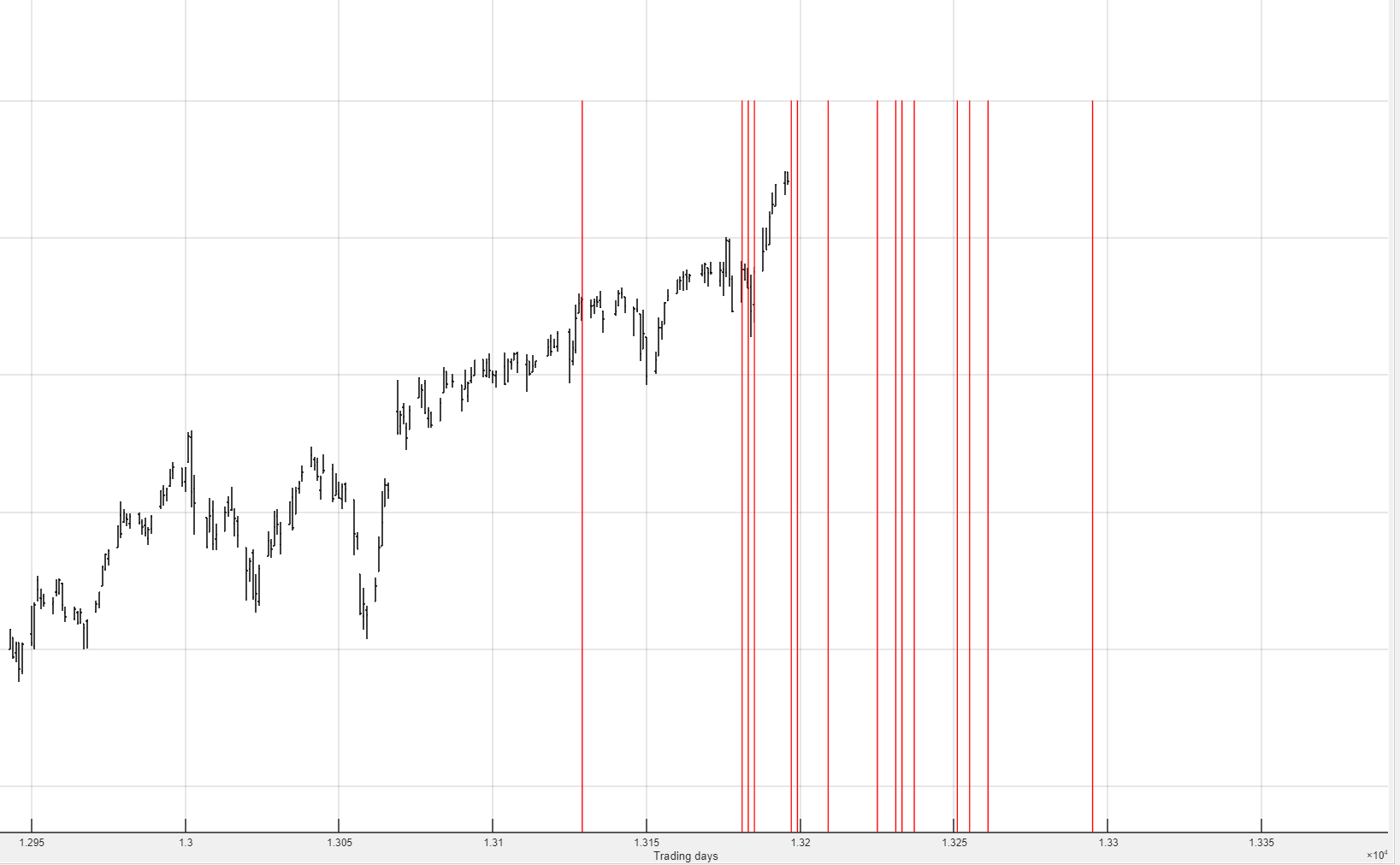
FIXED HURST CYCLE VARIANT….UP/DOWN COMPOSITES
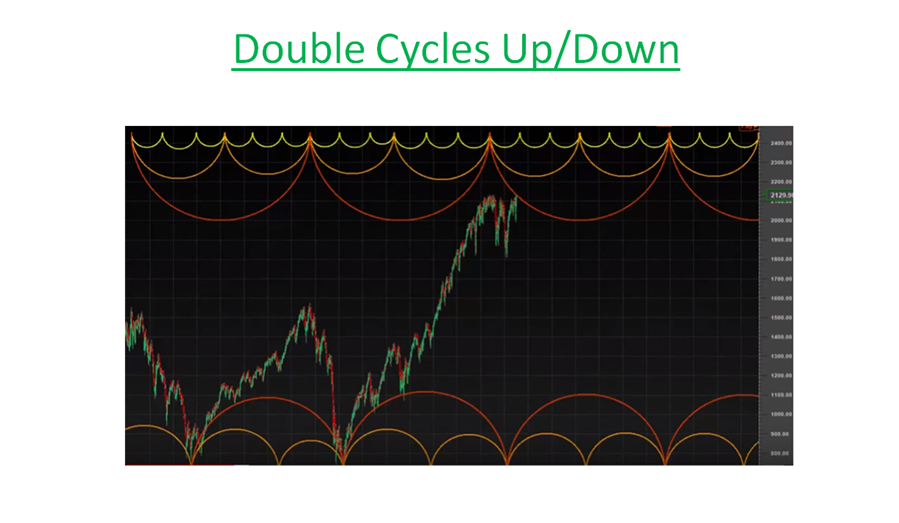
If we apply a unique type of cyclical analysis to our mathematical 3-Dimensional work above, our accuracy improves dramatically. Not only in PRICE, but most importantly in TIME.
Most cycle analysts out there are able to pick out various long-term and short-term market cycles at certain junctures. Such cycles tend to work for a time, only to disappear unexpectedly. That happens for two reasons……..
- Cycles tend to shift when geometric formations described above complete or shift. Once again, such geometric formations can only be measured and predicted by analyzing the stock market in 3-Dimensions.
- There are dual up and down cycles in development at all times, in all markets and on all time frames. This creates a much more complex system than most analysts work with today.
In other words, the above cyclical analysis allows us to TIME the market with astonishing accuracy on both the long-term and short-term basis. For example, we’ve had instances where we’ve been successful in calling major/minor tops and bottoms, in both price and time, within a 5 minute resolution.
Putting these two TIME composites together with 3-Dimensional Calculations allow us to pinpoint most upcoming turning points in both Price and Time.
SUMMARY…..
When all of the above is combined in an appropriate fashion, the stock market and most other financial instruments, can be predicted with ASTONISHING accuracy. In both PRICE and most importantly TIME. On all time frames and in all market conditions.

